As our population continues to age, the demand for geriatric care continues to grow. Geriatric nursing care plans are an essential component in ensuring the comfort and well-being of our elderly population. With a focus on personalized care and addressing the specific needs of the elderly, geriatric nursing care plans help nurses to provide the best possible care for their elderly patients.
Use this nursing care plan and management guide to provide care for geriatric clients. Enhance your understanding of nursing assessment, interventions, goals, and nursing diagnosis, all specifically tailored to address the unique needs of geriatric clients.
What is Gerontology Nursing?
Gerontology nursing or geriatric nursing specializes in the care of older or elderly adults. Geriatric nursing addresses the physiological, developmental, psychological, socio-economic, cultural, and spiritual needs of an aging individual.
As people age, they require more specialized care and attention to manage the various health challenges they face. Since aging is a normal and fundamental part of life, providing nursing care for elderly clients should not only be isolated to one field but is best given through a collaborative effort that includes their family, community, and other health care team. Through this, nurses may be able to use the expertise and resources of each team to improve and maintain the quality of life of the elderly.
Geriatric nursing care planning centers on the aging process, promotion, restoration, and optimization of health and functions; increased safety; prevention of illness and injury; facilitation of healing.
Nursing Care Plans and Management
Nursing care planning and management for geriatric patients focuses on promoting optimal health, independence, and quality of life in older adults. It involves comprehensive assessments, addressing age-related changes and chronic conditions, promoting functional abilities and mobility, managing medications and promoting medication safety, providing education on healthy aging practices, and ensuring a safe and supportive environment.
Nursing Problem Priorities
The following are the nursing priorities for geriatric patients:
- Perform assessments and develop individualized care plans for older adults.
- Manage chronic conditions and promote cognitive health.
- Administer medications and treatments.
- Provide education and support for healthy aging.
- Assist with activities of daily living and promote mobility.
- Collaborate with interdisciplinary teams and community resources.
- Implement fall prevention strategies and ensure a safe environment.
- Offer emotional support and counseling.
Nursing Assessment
Assess for the following subjective and objective data:
- Decreased mobility
- Balance issues
- Changes in cognition or memory
- Increased fatigue
- Changes in appetite
- Weight loss
- Sleep disturbances
- Mood changes
- Decreased vision or hearing
- Increased vulnerability to infections and slower wound healing
Nursing Diagnosis
After thorough assessment, nursing diagnoses are formulated to address the challenges of geriatric nursing, guided by the nurse’s clinical judgment and understanding of the patient’s unique condition. While nursing diagnoses help organize care, their use may vary across clinical settings. Ultimately, the nurse’s expertise and judgment shape the care plan to prioritize each patient’s needs. Here are examples of nursing diagnoses that may be useful for common concerns associated with older adult nursing care:
- Impaired Physical Mobility related to muscle weakness and joint stiffness as evidenced by limited range of motion and verbal report of difficulty moving independently.
- Risk for Falls as evidenced by balance issues, decreased vision, and unsteady gait.
- Activity Intolerance related to decreased muscle mass and low endurance as evidenced by shortness of breath and fatigue with minimal exertion.
- Impaired Memory related to age-related cognitive changes as evidenced by forgetfulness, difficulty recalling recent events, and disorientation to time.
- Self-Care Deficit (Bathing and Hygiene) related to decreased strength and limited joint flexibility as evidenced by inability to wash self independently and need for assistance in hygiene tasks.
- Risk for Impaired Skin Integrity as evidenced by immobility, thin and fragile skin, and reduced subcutaneous tissue.
- Chronic Pain related to joint inflammation and stiffness as evidenced by patient’s verbal report of persistent discomfort and observable guarding during movement.
- Disturbed Sleep Pattern related to frequent urination and decreased melatonin production as evidenced by reports of waking multiple times during the night and feeling unrested.
- Risk for Infection as evidenced by decreased immune response, recent hospitalization, and use of invasive devices.
- Risk for Ineffective Coping as evidenced by reports of loneliness, recent loss of spouse, and lack of social support system.
Nursing Goals
Goals and expected outcomes may include:
- The patient will be free from falls.
- The patient and caregiver will implement measures to increase safety and prevent falls in the home.
- The patient’s respiratory pattern and mental status will be normal for the client.
- The patient’s pulse oximetry or arterial blood gas results will be within the patient’s normal limits.
- The patient’s temperature and mental status will remain within the patient’s normal limits, or they return to the patient’s normal limits at a rate of 1°F/hr, after interventions.
- The patient will obtain adequate rest. The mental status will remain intact for the patient.
- The patient will state that his or her bowel habit has returned to normal within 3 to 4 days of this diagnosis.
- The patient’s stool will appear soft, and the patient will not strain in passing tools.
- The patient will exhibit or verbalizes improvement in at least one of the following: increased functional ability, sense of hopefulness, weight gain, increased appetite, and peaceful death.
- The patient will swallow independently without choking.
- The patient’s airway will be patent and lungs are clear upon auscultation both before and after meals.
- The patient’s mental status, vital signs, and urine specific, color, consistency, and concentration will remain within normal limits for the patient.
- The patient’s mucous membranes will remain moist, and there is no “tenting” of skin.
- The patient’s mentation will return to normal for the patient within 3 days of therapy.
- The patient will be free from injury or harm as a result of mental status.
- The patient will remain free of infection as evidenced by orientation to person, place, and behavior within the patient’s normal limits; respiratory rate and breathing pattern within the patient’s normal limits; urine that is clear, has a straw-yellow color, and of characteristic odor; core temperature and heart rate within the patient’s normal limits; sputum that is clear to whitish in color, and skin that is intact and of normal color and temperature for the patient.
- The patient’s skin will remain non-erythemic and intact.
Nursing Interventions and Actions
Therapeutic interventions and nursing actions for geriatric patients may include:
1. Promoting Safety and Preventing Falls & Injuries
Injury and fall prevention for geriatric patients involves several strategies, including conducting comprehensive assessments of the patient’s mobility, strength, and balance, implementing environmental modifications to reduce hazards, such as removing tripping hazards and improving lighting, providing assistive devices for mobility support, educating patients and caregivers on safe ambulation techniques, and promoting regular exercise programs to improve strength and flexibility. Reviewing and adjusting medication regimens to minimize side effects that could increase the risk of falls and ensure regular eye and hearing exams should be taken in consideration to address any sensory impairments that may contribute to falls.
Identify factors that increase the level of fall risk
These factors will help in determining interventions necessary for the patient. Risk factors include age, presence of an illness, sensory and motor deficits, medication use, and inappropriate use of mobility aids.
Assess the patient’s environment for factors associated with an increased risk for falls.
A patient who is not familiar with the placement of furniture in an area or who has inadequate lighting in the house increases the risk for falls.
Monitor the baseline level of consciousness (LOC) and neurologic status of the patient upon admission. Evaluate the mental status and pre-confusion functional abilities of the caregiver or significant others. Ask the patient to complete a three-step task. For example, “Put your right hand on your chest, wave with your left hand, and then raise your eyebrows”
A component of the Mini-Mental Status Examination, this assessment tool provides a baseline for succeeding evaluation of a patient’s confusion. A three-step task is complex and is a gross indicator of brain function. Because it requires attention, it can also test for delirium.
Utilize the confusion assessment method (CAM) to determine the presence or absence of delirium/confusion.
Delirium is a serious problem for hospitalized older individuals and usually goes not identified. The CAM tool (Waszynski, 2007) can be administered in a short period of time. CAM is a simple standardized tool that can be used by bedside clinicians and has been validated in settings from medical-surgical areas to intensive care units. If your agency does not already employ this tool, there are several online sources that describe it in detail.
Determine the cause of acute confusion.
Acute confusion is caused by physical and psychosocial conditions and not by age alone. For example, oximetry or arterial blood gas (ABG) values may reveal low oxygenation levels, serum glucose or fingerstick glucose may reveal high or low glucose levels, and electrolytes and complete blood count (CBC) will ascertain imbalances and/or presence of elevated white blood cell (WBC) count as a determinant of infection. Hydration status may be evaluated by pinching over the sternum or clavicle for turgor (tenting occurs with fluid volume deficit) and observing for dry mucous membranes and a furrowed tongue.
Test short-term memory by showing the patient how to use the call light, having the patient return the demonstration, and then waiting at least 5 minutes before having the patient demonstrate the use of the call light again. Record the patient’s actions in behavioral terms. Describe the “confused” behavior.
The inability to retain information beyond 5 minutes signifies poor short-term memory.
Assess the apical pulse and inform the physician of a newly discovered episode of an irregular pulse. If the patient is hooked on a cardiac monitor or telemetry, check for dysrhythmias; inform the physician accordingly.
Dysrhythmias and other cardiac abnormalities may cause poor brain oxygenation, which can result in confusion.
Monitor the patient’s pain using a rating scale of 0-10. If the pain scale is not possible, assess for nonverbal cues such as frowning, grimacing, rapid blinking, clenched fists, and fidgeting. Ask for some assistance from the significant other or caregiver to help in identifying pain behaviors.
Acute confusion can be a sign of pain.
Treat the patient for pain, as indicated, and monitor behaviors.
If the pain is the cause of the confusion, the patient’s behavior should change accordingly.
Monitor intake and output every 8 hours.
The output should equal intake. Dehydration can lead to acute confusion.
Assess kidney function by reviewing the patient’s creatine clearance result.
Renal function plays an essential role in fluid balance and is the main mechanism of drug clearance. Blood urea nitrogen (BUN) and serum creatinine are influenced by hydration status and in older individuals show only part of the picture. Hence, to fully understand and assess renal function in older patients, creatine clearance must be examined.
Review current medications, including over-the-counter (OTC) drugs, with the pharmacist.
High levels of some medications, such as digoxin, anticholinergic agents, and drug interaction can cause acute confusion.
If the patient has short-term memory problems, toilet or offer the urinal or bedpan every 2 hours while awake and every 4 hours during the night. Establish a toileting schedule and post it on the patient care plan and, inconspicuously, at the bedside.
A patient with a short-term memory problem cannot be assumed to use the call light.
Keep the patient’s urinal and other routinely used items within easy reach for the patient.
A confused patient may wait until it is too late to ask for help with toileting.
Have the patient wear glasses and hearing aid, or keep them close to the bedside and within easy reach for patient use.
Glasses and hearing aids are likely to aid in reduced sensory confusion.
Encourage the patient’s significant other to bring items familiar to the patient, including a blanket, bedspread, and pictures of family and pets.
Familiar objects may facilitate orientation while also producing comfort.
Check on the patient at least every 30 minutes and every time you pass the room. Place the patient close to the nurses’ station if possible. Provide an environment that is nonstimulating and safe.
A confused patient requires additional safety precautions.
Attempt to reorient the patient to his or her environment as needed. Keep a clock with large numerals and a huge print calendar at the bedside; verbally remind the patient of the date and day as needed.
Reorientation may lessen confusion.
Provide music but not TV.
Patients who are confused about the place and time usually think the action seen on TV is occurring in the room.
Tell the patient in simple terms what is occurring. For example, “I will take your blood pressure on your left arm,” “This food given to you is healthy,” or “I’ll help you walk towards the prayer room.”
Complex sentences may be hard to understand.
If the patient exhibits hostile behavior or misperceives your role (e.g., the nurse becomes a janitor or police), leave the room. Come back in 15 minutes. Introduce yourself to the patient as if it is your first time meeting. Start the conversation anew.
Patients who are acutely confused have poor short-term memory and may not retain the previous encounter or that you were involved in that encounter.
If the patient becomes aggressive, hostile, or argumentative while you are trying to reorient, stop this approach. Do not question the patient or the patient’s understanding of the environment. State, “I get why you may seem to think about that.”
This approach avoids the escalation of anger in a confused person.
If the patient has a permanent or severe cognitive deficit, check on her or him at least every 30 minutes and reorient to baseline mental status as indicated; however, do not question the patient about his or her understanding of reality.
Arguing can cause a cognitively impaired person to become hostile and combative. Note: Individuals with severe cognitive (e.g., Alzheimer’s disease or dementia) also can experience acute confusional states (i.e., delirium) and can be returned to their baseline mental state.
If the patient tries to leave the hospital, walk with him or her and attempt distraction. Ask the patient to tell you about the destination. For example, “That seems to be an interesting place! Can you describe it?” Keep your tone friendly and conversational. Resume walking with the patient away from doors and exit around the unit. After a few minutes, attempt to lead the patient back to the room. Offer snacks and naps.
Distraction is a proven measure of reversing a behavior in a patient who is confused.
Have the patient’s significant others talks with the patient by phone or come in and sit with the patient if the patient’s behavior requires checking more regularly than every 30 minutes.
These interventions by the significant other may help promote the patient’s safety.
If the patient tries to climb out of bed, offer a urinal or bedpan or assist to the commode.
The patient may need to use the toilet.
Alternatively, if the patient is not on bedrest, place him or her in a chair or wheelchair at the nurses’ station.
This action facilitates extra supervision to promote a patient’s safety while also supporting stimulation and limiting isolation.
Bargain with the patient. Attempt to establish an agreement to stay for a fixed period, such as until the health care provider, meal, or significant other comes.
This is a delaying approach to mitigate anger. Due to poor memory and attention span, the patient may forget he or she wanted to leave.
If the patient is attempting to pull out tubes, hide them. Put a stockinette mesh dressing over intravenous (IV) lines. Secure feeding tubes to the side of the patient’s face using paper tape, and drape the tube behind the patient’s ear.
Remember: Out of sight, out of mind.
Use medications being prescribed carefully for managing behavior.
Follow the maxim “start low and go slow” with medications because older patients can respond to a small number of drugs. Neuroleptics, such as haloperidol, can be used effectively in calming patients with dementia or psychiatric illness (contraindicated for individuals with Parkinsonism). However, if the patient is experiencing acute confusion or delirium, short-acting benzodiazepines (e.g., lorazepam) are more effective in alleviating anxiety and fear. Anxiety or fear usually promotes destructive or dangerous behaviors in acutely confused older patients.
Neuroleptics can cause akathisia, an adverse drug reaction characterized by increased restlessness.
Use restraints with caution and according to hospital policy.
Patients tend to become more agitated when wrist and arm restraints are applied.
Evaluate the continued need for certain interventions.
Some interventions may become irritating stimuli. For example, if the patient is now drinking, terminate the IV line; If the patient is eating, remove the feeding tube; if the patient has an indwelling urethral catheter, remove the catheter and start a bladder training.
Secure a wristband identification to warn healthcare providers to implement fall precautions on the patient.
Healthcare providers need to recognize patients at high risk for falls to implement measures to promote patient safety and prevent falls.
Place assistive devices and commonly used items within reach.
Provides easy access to assistive devices and personal care items. Items such as call bells, telephones, and water should be kept close to avoid frequent reaching.
Review hospital protocols regarding transferring a patient.
Hospital facilities should have clear policies and procedures during transfers that will ensure the patient’s safety.
Keep the patient’s bed in the lowest position at all times.
Keeping the bed closer to the floor prevents injury and the risk of falls.
Answer the call light as soon as possible.
This is to prevent an unstable patient from ambulating without any assistance.
Use side rails on the bed as needed
Raising the side rails reduces the risk of patients falling out of bed during transport.
Advise the patient to wear shoes or slippers with non-slip soles when walking.
Wearing non-slip footwear help prevents slips and falls.
Orient the patient to the surroundings. Avoid rearranging the furniture in the room.
The patient should be familiarized with the bed, location of the bathroom, furniture, and other environmental hazards that can cause older patients to trip or fall.
Ensure the patient’s room is well-lit. Consider the use of a bedside lamp that is turned on at night.
Providing lighting in key places can reduce fall risk and avoid obstacles during mobility.
Encourage the family and other significant others to stay with the patient at all times.
Prevents the patient from accidentally falling or pulling out tubes.
Ensure the patient’s eyesight is regularly checked and explain the importance of wearing eyeglasses if needed. Make sure glasses and hearing aids are always worn.
Hazard can be lessened if the patient utilizes appropriate aids to improve visual and auditory orientation to the environment. Visually impaired patients are at high risk for falls.
Instruct the patient how to ambulate at home, including using safety measures such as handrails in the bathroom.
Help relieve anxiety at home and eventually decreases the risk of falls during ambulation.
Encourage the patient to engage in a program of regular exercise and gait training.
Exercise can improve muscle strength, balance, coordination, and reaction time. Physical conditioning reduces the incidence of falls and avoids injury that is sustained when a fall happens.
Collaborate with other healthcare teams to assess and review patient’s medications that can contribute to the risk for falls. Identify the peak effects of the medications that can alter the consciousness of the patient.
A review of the patient’s prescribed medications will recognize side effects and drug interactions that may enhance fall injury risk. The more medications a patient takes, the greater the risk for side effects and interactions such as orthostatic hypotension, dizziness, confusion, urinary incontinence, and altered gait and balance. Polypharmacy in older adults is a significant risk factor for falls.
Evaluate the need for physical and occupational therapy to assist the patient with gait techniques and provide the patient with assistive devices for transfer and ambulation. Initiate a home safety evaluation as needed.
The use of gait belts provides a more secure means to safely assist patients when transferring from bed to chair. Assistive aids such as wheelchairs, canes, and walkers allow the patient to have stability and balance during ambulation. High toilet seats can facilitate safe transfer on and off the toilet.
2. Improving Gas Exchange and Respiratory Function
Gas exchange and respiratory function in geriatric patients may be compromised due to age-related changes such as decreased lung elasticity, reduced chest wall compliance, and decreased respiratory muscle strength. These changes can result in decreased lung capacity, impaired cough reflex, and increased susceptibility to respiratory infections.
Monitor and record the following during admission and routinely thereafter: respiratory rate, depth, and pattern; breath sounds, cough, sputum, and mental status.
Provides baseline data for subsequent assessments of the patient’s respiratory system.
Assess subtle changes in the patient’s behavior or mental status e.g., anxiety, disorientation, hostility, and restlessness. Check oxygen levels using pulse oximetry (higher than 92%) or reviewing ABG values (optimally Pao2 80%-95% or higher).
These changes in the sensorium can indicate decreasing oxygen levels. To comprehensively monitor pulse oximetry, the hemoglobin (Hgb) must be determined. Patients with low hemoglobin levels can have a higher pulse oximetry level and still exhibit acute confusion or restlessness. This happens as a result of diminished hemoglobin to deliver oxygen through the body.
Auscultate the lungs for adventitious sounds.
When people get older, lung elasticity decreases. The lower portion of the lung is not sufficiently aerated resulting in the occurrence of crackles (usually heard in individuals 75 years of age and above). This sign alone does not imply the presence of a disease condition. Crackles (rales) that do not clear with coughing in an individual with no additional symptoms such as increased temperature, increasing anxiety, changes in sensorium, and increasing respiratory depth are considered benign.
Encourage breathing and coughing exercises. Instruct patient in the use of incentive spirometry if applicable.
These measures provide alveolar expansion and remove the secretions from the bronchial tree, resulting in optimal gas exchange.
Encourage increased fluid intake (greater than 2.5 liters daily) unless contraindicated by a renal or cardiac condition.
Adequate hydration promotes the mobilization of secretions.
Treat hyperthermia immediately, reduce pain, lessen pacing activity, and decrease anxiety.
These measures decrease the demand for increased oxygen consumption.
Teach the patient the use of support devices such as nasal cannulas or oxygen masks.
Knowledge about these medical devices promotes adherence to the treatment.
3. Managing Hypothermia
Hypothermia is a significant concern for geriatric patients due to age-related changes in thermoregulation and reduced ability to maintain body temperature. Geriatric patients often have decreased subcutaneous fat, diminished muscle mass, and impaired thermoregulatory responses, making them more susceptible to rapid heat loss and difficulty in maintaining a stable body temperature.
Monitor temperature through the use of a low-range thermometer if available.
This assessment will indicate the presence of hypothermia. The normal temperature of an older adult is 35.5°C (96°F).
Monitor oral temperature by placing the tip of the thermometer far back in the patient’s mouth.
Oral temperature provides the most accurate reading of a patient’s core temperature.
Assess and record the mental status of the patient.
Increasing disorientation, altered sensorium, or atypical behavior may indicate hypothermia.
Watch out for the use of sedatives, muscle relaxants, and hypnotics (including anesthetics).
These pharmacologic therapies can decrease shivering, hence putting patients at risk for environmental hypothermia. Furthermore, elderly people are at risk for environmental hypothermia at ambient temperatures of 22.22°-23.89°C (72°-75° F)
Make sure to give blankets to patients undergoing testing or x-ray examination.
This measure will keep the patient warm and will help avoid hypothermia.
Initiate slow rewarming if the patient is mildly hypothermic.
Increasing the room temperature to at least 23.89°C (77.5°F) is one method to reverse mild hypothermia. Additional measures include the use of warm blankets, head covers, and warm circulating air blankets.
Warm the patient internally by providing warm oral or IV fluids if the patient’s temperature drops below 35°C (95°F).
This method is done to reverse moderate to severe hypothermia. Other methods include warmed saline gastric or rectal irrigations or the introduction of warmed humidified air into the airway.
Watch out for signs of excessive rapid rewarming.
Irregular HR, dysrhythmias, and very warm extremities caused by vasodilation in the periphery, which causes heat loss from the core are some of the signs of excessive rapid rewarming.
Once the patient’s temperature fails to increase by 1°F/hr using these methods, anticipate laboratory request for WBC count for possible sepsis, glucose level for hypoglycemia, and thyroid test for hypothyroidism.
Causes aside from environmental factors may be responsible for hypothermia.
Administer antibiotics as prescribed for sepsis, glucose for hypoglycemia, or thyroid therapy.
Treating the underlying condition will help the patient’s temperature to return to normal.
4. Promoting Adequate Sleep and Improving Sleep Patterns
Sleeping patterns in geriatric patients may be affected by various factors, including physiological changes, comorbidities, medication side effects, and environmental factors. It is common for older adults to experience changes in sleep architecture, such as decreased deep sleep and increased awakenings during the night.
Assess and record the patient’s sleeping pattern, gathering information from the patient’s significant others or caregiver.
Elderly people usually sleep less than they did when they were younger and often awaken more frequently at night.
Gather inquiries regarding activity level and nap.
Persons with a low level of activity and who take naps frequently sleep only 4 to 5 hours per night.
Monitor the patient’s activity level.
If the patient complains of being tired after activities or displays behaviors such as irritability, yelling, or shouting, encourage napping after lunch or early in the afternoon. Otherwise, discourage daytime napping, especially in the later afternoon, because it can interfere with nighttime sleep.
Identify the patient’s typical nighttime routine and try to follow it.
Emulating the typical nighttime rituals may promote sleep.
Try to arrange activities together such as doing vital signs, taking medication, and toileting.
This lessens the frequency of interruptions and promotes rest and sleep.
Refrain the patient from drinking caffeinated coffee, cola, and tea after 6 pm.
The effect of stimulants includes increased alertness, insomnia, and frequent nighttime awakenings to urinate.
Provide a calm and quiet environment and lessen interruptions during sleep hours.
Exposure to bright lights, unnecessary noises, snoring roommates, and loud talking can result in sleep deprivation. Use of white noise sound generators may facilitate sleep.
Administer pain medications as ordered, provide back rub, and have a pleasant conversation at sleep time.
These interventions promote comfort and thus enhance sleep.
5. Restoring Bowel Function and Managing Constipation
Bowel function and constipation are common concerns among geriatric patients due to age-related changes, comorbidities, and medication use. As individuals age, there is a natural decline in the efficiency of the digestive system, leading to potential alterations in bowel habits. Constipation, characterized by infrequent or difficult bowel movements, can significantly impact the quality of life for older adults.
During admission, assess and record the patient’s normal bowel elimination pattern (frequency, time of day, associated habits, and previous measures to manage constipation). Discuss with the patient’s significant others or caregiver if the patient cannot provide this information.
This assessment sets a baseline and identifies the normal bowel elimination pattern of the patient.
Quantify the amount of roughage to the severity of constipation.
Excessive roughage taken too rapidly can cause gas, bloating, and diarrhea.
Assess hydration status for signs of dehydration. Maintain diet, fluid, activity, and continuation of routines. If there is an absence of bowel movement within 3 days, start with mild laxatives to attempt to reattain the normal bowel pattern.
The use of osmotic medications can result in dehydration. Fluid volume deficit can result in hard stools, which are more difficult to pass.
Inform the patient that changes happening during hospitalization may increase the risk of constipation. Allow the patient to use effective nonpharmacologic management practiced at home as this problem is observed or prophylactically as needed.
Constipation is not difficult to handle preventively as it is when present or prolonged.
Educate the patient about the connection between fluid intake and constipation. Encourage fluid intake (2500 ml/day) unless contraindicated. Assess and record bowel movements (amount, date, time, consistency).
Increased consumption of fluids can make the stool soft and lessens the risk of constipation. Patients with renal, cardiac, or hepatic diseases may have a fluid restriction.
Instruct the patient to include roughage in every meal when possible. For patients with low tolerance to raw foods, encourage intake of bran via cereals, bread, and muffin.
Having a roughage (raw fruits and vegetables, whole grains, legumes, nuts, fruits with skin) in the diet adds bulk to the stool, therefore, minimizes episodes of constipation.
Educate the patient about the connection between activity level and constipation. Support optimal activity for all patients. Institute and build an activity program to foster participation; include devices necessary to enable independence.
Regular exercise stimulates peristaltic movement thus it can reduce or prevent constipation.
Encourage the patient to use his or her gastrocolic or duodenocolic reflex to promote colonic emptying, if the usual bowel movement happens in the early morning. If the patient’s bowel movement occurs in the evening, ambulate the patient just before the right time.
Scheduling interventions that correspond with the bowel habits of the patient are more likely to increase bowel movements. Taking warm liquids in the morning, for example, also promotes peristalsis. Digital stimulation of the inner anal sphincter can trigger a bowel movement.
Try to use the patient’s previously effective measures. Follow the maxim “start low, go slow” (i.e., apply the lowest level of non-natural intervention and progress gently to a more powerful intervention).
Aggressive measures may lead to rebound constipation and can hinder subsequent bowel movements.
When giving pharmacologic therapy to the patient, administer the more benign, oral methods first. The following hierarchy of laxatives is recommended:
- Bulk-forming additives such as bra, methylcellulose, psyllium
- Mild laxatives (apple or prune juice, Milk of Magnesia)
- Stool softeners (docusate calcium, docusate sodium)
- Potent laxatives or cathartics (senna, bisacodyl, cascara sagrada)
- Medicated suppositories (glycerin, bisacodyl)
- Enema (tap water, saline, sodium phosphate/biphosphate)
Older persons tend to focus on the loss of habit as an indicator of constipation rather than on the number of stools. Do not intervene pharmacologically until the older adult has not had a stool for three days.
Administer laxatives as ordered after diagnostic imaging of the gastrointestinal tract with the aid of barium.
Laxatives are administered to facilitate barium removal. This will prevent rebound constipation due to severe disruption of bowel habits during the prep
6. Failure to Thrive in Older Adults
Adult failure to thrive is a complex condition observed in geriatric patients that is characterized by unintentional weight loss, a decline in functional abilities, and an overall decline in health status. It is often multifactorial and can result from a combination of physical, psychological, and social factors. This condition poses significant challenges for both patients and nurses as it can lead to increased morbidity and mortality.
Conduct a comprehensive physical assessment. Evaluate the condition of chronic disease.
A thorough system assessment provides a baseline for succeeding comparisons.
Examine laboratory and other studies such as CBC with differential, albumin, pre-albumin levels, thyroid-stimulating hormone (TSH), and basic metabolic panel (BMP).
A study of laboratory information determines nutrients and electrolyte imbalances important for basic body function, protein status and thyroid function, and presence/absence of infection.
Gather essential information about the patient’s history; involve the caregiver as needed. Assess critical factors such as the death of a spouse or family member.
Taking a patient’s history that concentrates on the timing of the change in behaviors and appetite, medications, and a reduction in activities of daily living (ADLs) and instrumental activities of daily living (IADLs) will help determine contributing factors to the drop in function. Examples of these factors include depression, dementia, pain, and decreased sense of taste or smell.
Allow the patient to vent feelings of fear, anger, despair, frustration, and concerns about hospitalization and health.
Supporting the patient and acknowledging that these feelings are normal often help lessen feelings of despair.
Explain age-related changes to the patient and significant others.
When an individual normally ages, their physiologic reserve declines and affects multiple systems. Failure to thrive can occur from the interaction of three components: physical frailty, disability or decline in functional ability, and impaired neuropsychiatric function.
Frailty is defined as a state of increased vulnerability caused by a diminished physiologic reserve affecting multiple systems.
Disability is defined as difficulty or decrease in performing ADLs.
Neuropsychiatric impairment is a complex phenomenon that can occur from life circumstances leading to depression, physiologic disruption leading to delirium, or neurologic changes resulting in cognitive impairment.
Collaborate with other health care providers as needed.
- Speech therapists and dieticians
They can help address issues such as swallowing or inadequate food and fluid intake. - Physical and occupational therapist
They can help assess physical strengths/limitations and the potential for improvement with a program or assistive tools. - Social Services
They can help assess support networks and readiness for end-of-life possibilities.
7. Preventing Aspiration
Aspiration, a common concern in geriatric patients, occurs when foreign substances, such as food or fluids, enter the airway and lungs instead of the digestive tract. This can lead to respiratory complications, such as pneumonia, and pose significant health risks for older adults.
Evaluate the patient’s swallowing reflex by putting your thumb and index finger on both sides of the laryngeal prominence and instruct the patient to swallow. Assess the gag reflex by gently touching one side and then the other palatal arch with a tongue blade. Record these findings.
The ability to swallow and an intact gag reflex are important to avoid aspiration and choking before the patient puts foods/fluids in the mouth.
Monitor food intake. Record the patient’s food consumption (including amount and consistency), where the patient puts food in the mouth, how the patient manipulates or chews prior to swallowing, and the duration of time before the patient swallows the food bolus.
This information can be useful for some caregivers during the succeeding feedings.
Monitor the patient during swallowing.
This evaluation will help assess the patient’s swallowing ability without choking. Deficiencies may require aspiration precautions.
Monitor the patient for choking or coughing before, during, or after swallowing.
Choking or coughing can happen within a few minutes following food or fluid placement in the mouth and indicates the aspiration of material into the airway.
Check for a wet or gurgling sound upon speaking after the patient swallow.
Wet-sounding speech may signal a pulmonary aspiration and can indicate restricted or absent gag and swallow reflex.
Assess the patient for breath sound abnormalities (e.g., crackles [rales], rhonchi, wheezes), shortness of breath, dyspnea, cyanosis, increasing temperature, and a deteriorating level of consciousness).
These are indicative of silent aspiration. For example, elder patients are at higher risk for silent aspiration since their sphincter fails to close completely between swallows.
Watch out for food retention on the sides of the mouth.
This can signal poor tongue movement.
Check for drooling of saliva or food or the inability to close the lips when using a straw.
These are signs of restricted jaw, lip, or tongue movement.
Anticipate a video fluoroscopic swallowing exam (VFSE) or modified barium swallow exam (MBS) to evaluate the patient’s gag and swallow reflexes
This non-invasive procedure is used to determine whether patients are aspirating, the consistency of foods and liquid most likely to be aspirated, and the aspiration cause. Using four consistencies of barium, the radiologist and speech therapist check for the presence of decreased or impaired tongue function, reduced peristalsis in the pharynx, delayed or absent swallow reflex, and restricted ability to close the epiglottis that guards the airway.
Based on the results of the swallowing video, fluoroscopy, and thickened fluids may be prescribed.
Thickening agents are added to the fluid to increase its viscosity and improve swallow safety. Likewise, mechanical soft, pureed, or liquid diets may be ordered to permit patients to take in food with a low risk for aspiration.
Anticipate the need for a speech therapist as indicated.
This collaboration will address the problem of gag and swallow reflexes.
Tilt the head forward 45° during swallowing for patients with impaired swallowing reflexes.
Note: Tilt the head toward the unaffected side for patients with hemiplegia.
This head position will help prevent inadvertent aspiration by closing off the airway.
Encourage adequate rest periods prior to meals.
Low energy or exhaustion raises the risk of aspiration.
Put the patient in an upright position with the chin tilting down slightly during eating or drinking, and place pillows on the side to maintain the upright position.
This position lessens the possibility of choking and aspirating by closing off the airway and promoting a gravitational flow of foods and fluids into the stomach and through the pylorus.
Make sure that the patient’s denture fits properly and stays in place.
Chewing well decreases the risk of choking.
Instruct patients with dementia to chew and swallow with every bite. Watch out for retained food between the sides of the mouth.
A patient with dementia tends to forget to chew and swallow.
Allow sufficient time for the patient to finish eating and drinking.
Usually, patients with swallowing problems need twice as much time for eating and drinking as those whose swallowing is intact.
Allow someone to stay with the patient during meals or fluid intake.
Promotes safety in case of choking or aspiration.
Encourage breathing and coughing exercise every 2 hours while awake and every 4 hours during the night.
These measures facilitate lung expansion and help avoid infection.
Have the suction machine available in case of aspiration.
Suction equipment should be readily available at the bedside, especially for patients with a high risk for aspiration.
If aspiration occurs, do the following measures:
- Assess indications of a complete airway obstruction based on the American Heart Association (AHA) guidelines such as signs and symptoms of poor air exchange, cyanosis, and inability to speak or breathe.
Complete airway obstruction requires immediate intervention.
- Assess for any alterations in the breathing pattern and respiratory rate every 1-2 hours following a suspected aspiration.
This assessment helps determine that a change in the patient’s condition has occurred.
- Encourage a patient with partial airway obstruction to forcefully cough as possible.
This measure will relieve and clear the airway.
- Suction the airway using a large-bore catheter (e.g., Yankauer or tonsil suction tip) for unconscious or nonresponsive patients with partial airway obstruction.
Suctioning will remove the obstruction.
- For either a complete or partial aspiration, notify the health care provider and get a request for a chest x-ray examination.
X-ray findings and results will confirm if food or fluids obstruct the airway.
- Institute nothing by mouth (NPO) status until a diagnosis is established.
NPO will lessen the risk to the patient.
- Anticipate the use of antimicrobial agents.
A possibility of the occurrence of aspiration pneumonia.
8. Preventing Fluid Imbalance
Maintaining fluid balance is essential for the overall health and well-being of geriatric patients. Age-related changes, comorbidities, and medication use can impact fluid balance, leading to dehydration or fluid overload. Understanding the unique considerations of fluid balance in older adults and implementing appropriate interventions is important to prevent complications and promote optimal hydration status in this population.
Assess and record the amount, color, and frequency of any fluid output, including urine, diarrhea, emesis (vomit), or other drainages.
This assessment allows a comparison of intake to output amounts. Dark-colored urine signals concentration and hence dehydration.
Assess and record skin turgor. Check hydration status by gently pinching a fold of skin over the forehead, clavicle, sternum, or abdomen.
Skin that is prone to tenting usually signals dehydration. A furrowed tongue signifies severe dehydration.
Monitor fluid intake. Encourage fluid intake of 2-3 liters per day unless contraindicated. Indicate intake goals for the day, evening, and night shifts.
These measures help to ensure proper and adequate hydration. Restrictions may apply to patients suffering from cardiopulmonary and renal disorders.
Assess the level of consciousness including orientation, ability to obey commands, and behavior.
Inability to obey commands, decrease in orientation, and disorderly behavior can indicate dehydration.
Weigh the patient daily at the same time of day (usually prior to breakfast) using the same scale and clothing.
Utilizing comparable measurements guarantees more valid comparisons. Wide variations in weight (e.g., 2.5 kg [5lb] or greater) can indicate increased or decreased hydration status.
Assess the patient’s ability to take and drink fluids by himself or herself. Put fluids within easy reach. Utilize cups with lids to lessen concern over spilling.
These measures eliminate barriers to adequate fluid intake.
Monitor intake & output, especially for a patient receiving tube feedings or contrast medium. Check for evidence of third spacing of fluids, including increasing peripheral edema, especially sacral; output significantly less than intake (1:2); and decrease urine output (less than 30 ml/hr).
These agents act osmotically to pull fluid into the interstitial tissue.
If the patient is on IV infusions, evaluate cardiac and respiratory status for signs of fluid overload. Assess the apical pulse and auscultate the lungs during vital signs monitoring.
A fluid overload could lead to heart failure or pulmonary edema. Increasing heart rate (HR), crackles, and bronchial wheezes can be indicative of heart failure or pulmonary edema.
In dehydrated patients, anticipate a rise in serum sodium, blood urea nitrogen, and serum creatinine levels.
An increase in these laboratory values is usually common with dehydration.
Ensure easy access to the toilet, urinal, commode, or bedpan at least every two (2) hours when the patient is awake and every four (4) hours at night. Answer the call light immediately.
The duration between the acknowledgment of the need to void and urination declines with age.
Whenever in the room, give the patient fluids. Offer a variety of liquids the patient prefers, but limit caffeine since it acts as a diuretic.
Aging individuals have a reduced sense of thirst and need encouragement to drink.
9. Promoting Infection Control and Minimizing Infections
Geriatric patients are prone to infection due to age-related changes in the immune system, known as immunosenescence, which can impair the body’s ability to fight off infections. Underlying medical conditions, such as chronic diseases and impaired organ function, can further weaken the immune system. Age-related changes in skin integrity, decreased mobility, and increased use of invasive medical procedures also contribute to the higher risk of infections in geriatric patients.
Monitor baseline vital signs, including the level of consciousness and orientation. In addition, watch out for a heart rate greater than 100 bpm and a respiratory rate higher than 24 breaths per minute. Auscultate lung fields for adventitious sounds. Be aware, however, that crackles (rales) may be a normal finding when heard in the lung bases.
Acute changes in mental status are indicative signs of infection in older individuals. Other signs of infection include increased heart rate and respiratory rate. Adventitious breath sounds may or may not be present until the late stages of the illness.
Assess the patient’s skin for tears, breaks, redness, or ulcers. Record the condition of the patient’s skin on admission and as an ongoing assessment.
Skin that is not intact is prone to infection.
Assess the patient’s temperature, using a low-range thermometer if possible.
Older adults may run lower temperatures due to decreasing metabolism in individuals with a sedentary lifestyle. They also are drawn to lose heat easily to the environment and may not be kept at the correct temperature. A temperature of 35.5°C (96°F) may be normal, whereas a temperature of 36.67°-37.22°C (98°-99°F) may be regarded as febrile.
Obtain temperature readings rectally if the oral reading does not match the clinical picture (i.e., skin is very warm, the patient is restless, mentation is depressed) or if the temperature reads 36.11°C (97°F) or higher.
If the oral reading shows inaccuracy, rectal readings may help guarantee the patient’s core temperature is correctly determined.
Avoid the use of a tympanic thermometer if possible.
The reliability of the electronic tympanic thermometer may be inconsistent because of improper use.
Assess the quality and color of the patient’s urine. Document changes when noted, and report findings to the health care provider. Also be alert to urinary incontinence, which can signal urinary tract infection (UTI).
Urinary tract infection, as evidenced by cloudy, foul-smelling urine without painful urination and urinary incontinence, is the most common infection in older adults.
Limit urinary catheter insertion when possible.
Urinary catheter poses a higher risk of infection.
Anticipate blood cultures, urinalysis, and urine culture.
Cultures can identify the microorganisms (bacteria, fungi, or fungi) that are causing the infection.
Anticipate the request for a white blood cell count.
An older patient with WBC count higher than 11,000/mm3 can be a late sign of infection since their immune system is slower to respond compared to young individuals.
If an infection is proven, expect the initiation of IV fluid therapy.
Fluid therapy will improve hydration at the same time compensate for losses caused by fever and liquefy the secretions for less forceful expectoration.
Anticipate a chest x-ray examination as ordered if the patient’s lung sounds are not clear.
This is requested by the physician to rule out pneumonia.
Anticipate the need for a broad-spectrum antibiotic regimen, antipyretic, and oxygen inhalation if an infection is proven.
These actions will eradicate the infection, reduce fever, and improves oxygenation to the brain. Fever raises cardiac workload as the body reacts to the infection. Due to a decreased physiologic reserve, older individuals may have a greater risk of heart failure or pulmonary edema as a result of prolonged tachycardia.
10. Preventing Pressure Ulcer Formation
Geriatric patients are prone to skin breakdown and pressure ulcers due to factors such as decreased skin elasticity, thinning of the skin, reduced subcutaneous fat, impaired circulation, and limited mobility. Age-related changes in the skin, combined with comorbidities, immobility, and malnutrition, make these populations more vulnerable to developing pressure ulcers.
Assess the patient’s skin upon admission and regularly thereafter.
This assessment provides a baseline for succeeding assessments of skin integrity.
Monitor skin over bony prominences for erythema.
Skin that rests over the sacrum, scapulae, heels, spine, hips, pelvis, greater trochanter, knees, ankles, costal margins, occiput, and ischial tuberosities is at higher risk for skin breakdown due to excessive external pressures.
Observe skin for any areas of redness, changes in the texture or any breaks in the skin surface.
Redness or breaks in skin integrity require aggressive skin care measures to avoid additional breakdown and infection.
Use a lift sheet or roll the patient during repositioning.
Sliding, pulling, or dragging across sheets can result in shear injury.
Provide a turning schedule at least every two (2) hours.
Turning shuffles the site of pressure and pressure relief.
Utilize waterbed, airbed, air-fluidized mattresses, alternating pressure mattresses, or other pressure-sensitive mattresses for older individuals who are unable to get out of bed or on bed rest.
These mattresses promote comfort and protect skin from injury produced by prolonged pressure.
Pad bony prominences with pillows or pads, even when the patient is up in a wheelchair or sits for long periods.
This measure keeps alternative positions and pads the bony prominences, hence protecting overlying skin. The ischial tuberosities are prone to breakdown when a patient is in a seated position. Gel pads for the chair or wheelchair seats help in dispersing pressure.
Use lotions generously on dry skin.
Lotions provide moisture and can make skin smooth and supple. Lanolin-containing lotions are particularly helpful.
Assist the patient out of bed as frequently as possible. Amply utilize mechanical lifting devices to assist during patient transfers. If getting out of bed is impossible, provide support with position changes every 2 hours.
These measures promote blood flow which can prevent skin breakdown.
Establish and provide a turning schedule on the patient care plan and at the bedside.
Schedule raises awareness of the nurses and significant others of turning schedules.
Discourage placing tubes under the patient’s head or limbs. Place a pad or pillow between the patient and the tube for cushion support.
Too much pressure from tubes can result in decubitus ulcers.
Use tepid water (32.2°-40.5°C [90°-105°F]) and super-fatted, nonperfumed soaps.
Hot water can burn older adults, who have diminished pain sensitivity and reduced sensation to temperature. Super-fatted soaps prevent skin dryness.
Clean the patient’s face, axillae, and genital areas daily.
Complete baths dry out the skin of an older adult and are preferably performed every other day instead.
Record the percentage of food intake with meals. Allow the significant other to provide foods the patient likes. Recommend nutritious snacks as indicated. Collaborate with a dietician as needed for nutritional advice.
A diet that is high in protein and ascorbic acid protects the skin from breakdown.
Limit the use of plastic protective pads under the patient. When used, place at least one layer of cloth between the patient and the plastic pad to absorb moisture. For patients with incontinence, observe the pad at least every two (2) hours. Avoid the use of adult diapers unless the patient is ambulatory, going for a diagnostic test, or is up in a chair.
Pads and diapers trap heat and moisture and can result in the breakdown of the skin (macerated associated skin damage).
Recommended Resources
Recommended nursing diagnosis and nursing care plan books and resources.
Disclosure: Included below are affiliate links from Amazon at no additional cost from you. We may earn a small commission from your purchase. For more information, check out our privacy policy.
Ackley and Ladwig’s Nursing Diagnosis Handbook: An Evidence-Based Guide to Planning Care
We love this book because of its evidence-based approach to nursing interventions. This care plan handbook uses an easy, three-step system to guide you through client assessment, nursing diagnosis, and care planning. Includes step-by-step instructions showing how to implement care and evaluate outcomes, and help you build skills in diagnostic reasoning and critical thinking.

Nursing Care Plans – Nursing Diagnosis & Intervention (10th Edition)
Includes over two hundred care plans that reflect the most recent evidence-based guidelines. New to this edition are ICNP diagnoses, care plans on LGBTQ health issues, and on electrolytes and acid-base balance.

Nurse’s Pocket Guide: Diagnoses, Prioritized Interventions, and Rationales
Quick-reference tool includes all you need to identify the correct diagnoses for efficient patient care planning. The sixteenth edition includes the most recent nursing diagnoses and interventions and an alphabetized listing of nursing diagnoses covering more than 400 disorders.

Nursing Diagnosis Manual: Planning, Individualizing, and Documenting Client Care
Identify interventions to plan, individualize, and document care for more than 800 diseases and disorders. Only in the Nursing Diagnosis Manual will you find for each diagnosis subjectively and objectively – sample clinical applications, prioritized action/interventions with rationales – a documentation section, and much more!

All-in-One Nursing Care Planning Resource – E-Book: Medical-Surgical, Pediatric, Maternity, and Psychiatric-Mental Health
Includes over 100 care plans for medical-surgical, maternity/OB, pediatrics, and psychiatric and mental health. Interprofessional “patient problems” focus familiarizes you with how to speak to patients.

See also
Other recommended site resources for this nursing care plan:
- Nursing Care Plans (NCP): Ultimate Guide and Database MUST READ!
Over 150+ nursing care plans for different diseases and conditions. Includes our easy-to-follow guide on how to create nursing care plans from scratch. - Nursing Diagnosis Guide and List: All You Need to Know to Master Diagnosing
Our comprehensive guide on how to create and write diagnostic labels. Includes detailed nursing care plan guides for common nursing diagnostic labels.
More care plans related to basic nursing concepts:
- Cancer (Oncology Nursing) | 12 Care Plans
- End-of-Life Care (Hospice Care or Palliative) | 4 Care Plans
- Geriatric Nursing (Older Adult) | 11 Care Plans
- Prolonged Bed Rest | 8 Care Plans
- Surgery (Perioperative Client) | 13 Care Plans
- Systemic Lupus Erythematosus | 4 Care Plans
- Total Parenteral Nutrition | 4 Care Plans
References and Sources
Here are the references and sources for this Geriatric Nursing Care Plan:
- Boltz, M., Capezuti, E., Fulmer, T. T., & Zwicker, D. (Eds.). (2016). Evidence-based geriatric nursing protocols for best practice. Springer Publishing Company.
- Carpenito-Moyet, L. J. (2009). Nursing care plans & documentation: nursing diagnoses and collaborative problems. Lippincott Williams & Wilkins.
- Gilje, F., Lacey, L., & Moore, C. (2007). Gerontology and geriatric issues and trends in US nursing programs: a national survey. Journal of Professional Nursing, 23(1), 21-29.
- Mauk, K. L. (Ed.). (2010). Gerontological nursing: Competencies for care. Jones & Bartlett Publishers. [Link]
- Wold, G. H. (2013). Basic Geriatric Nursing-E-Book. Elsevier Health Sciences.
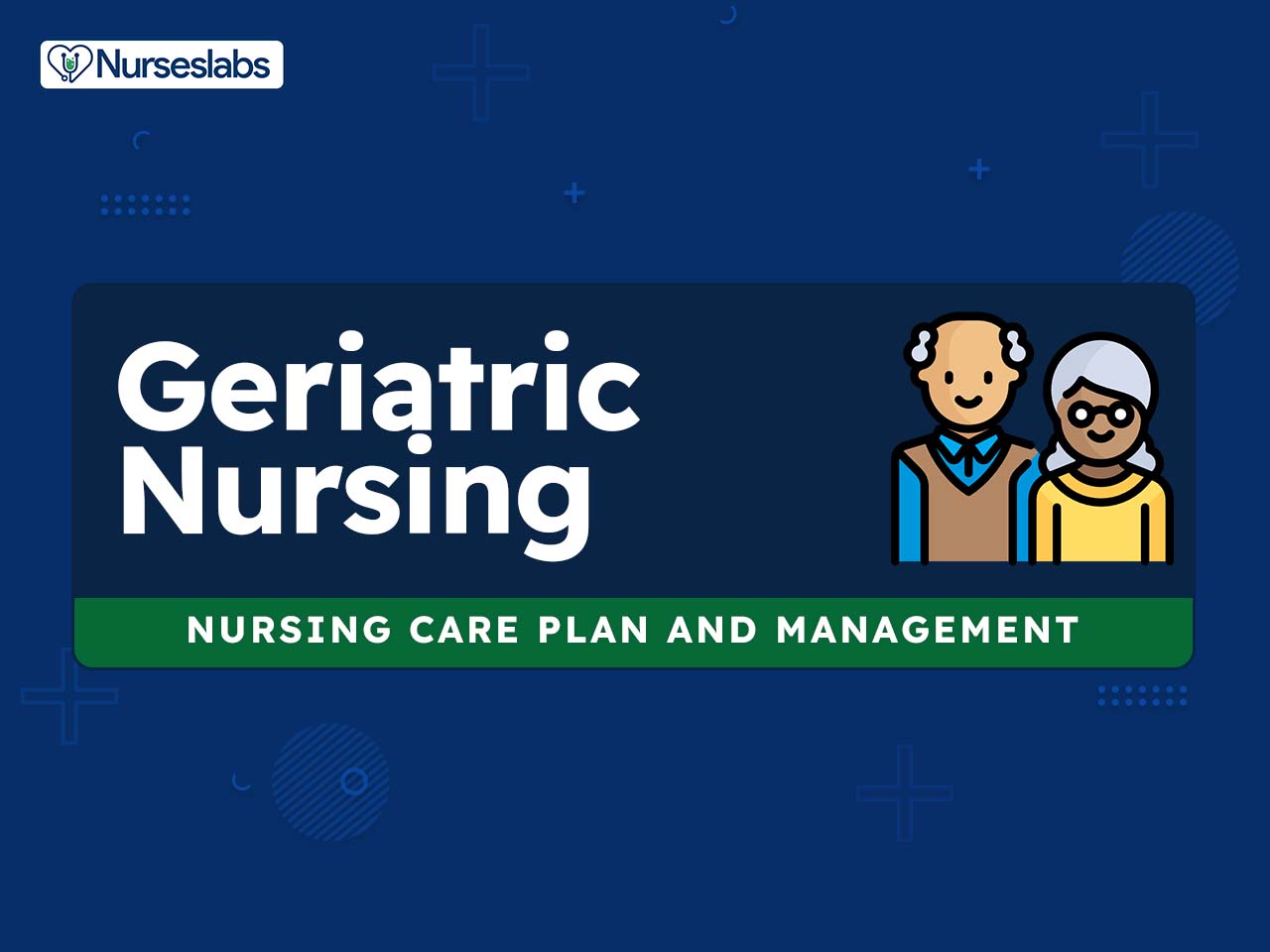
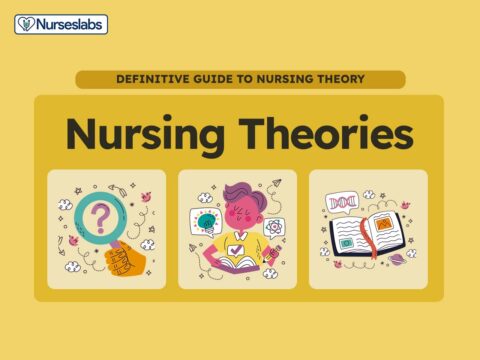
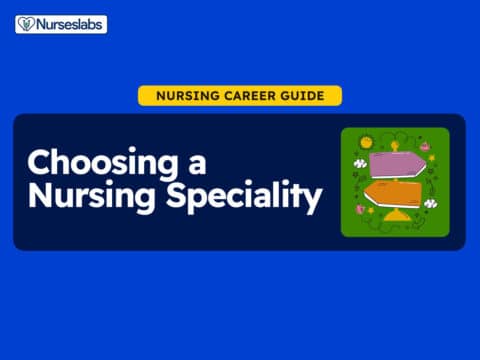

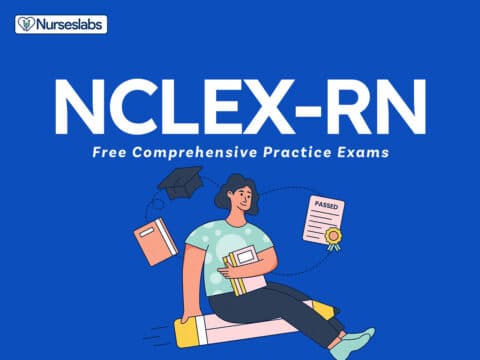




















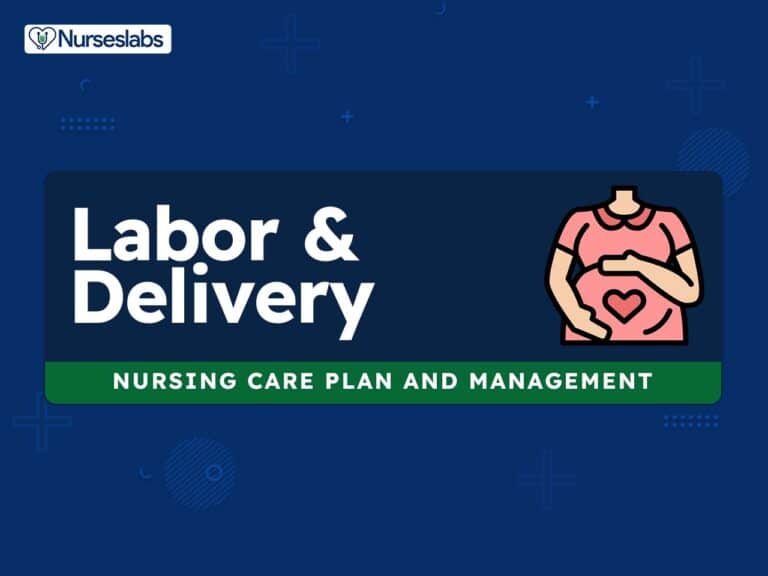

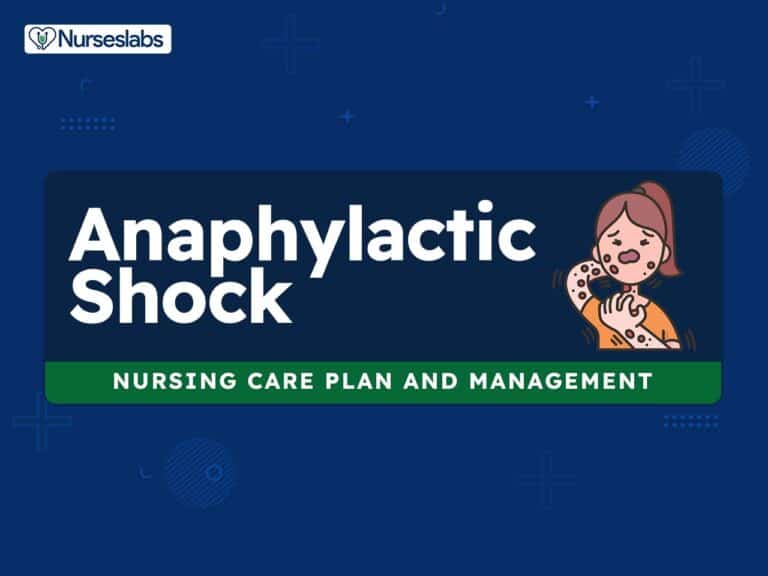
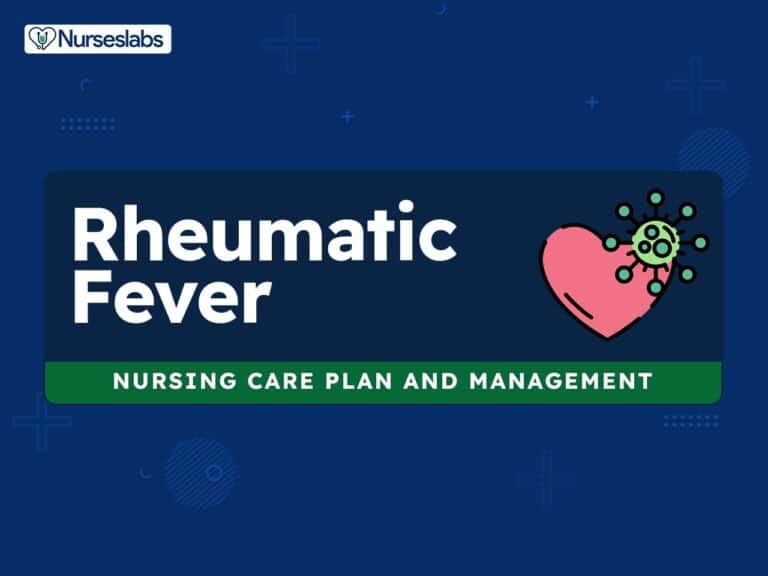
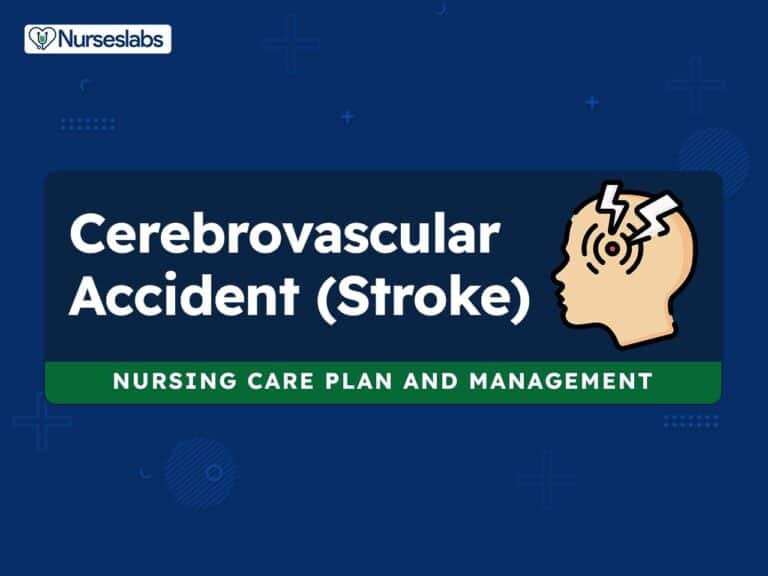
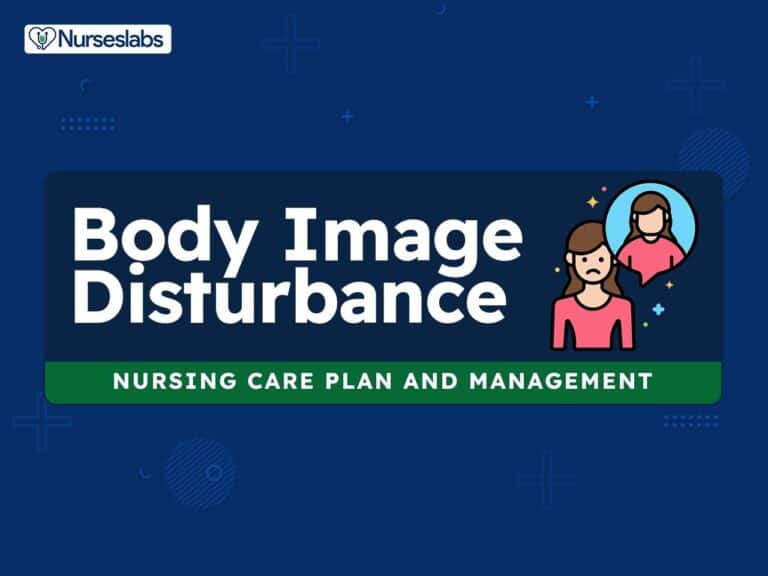
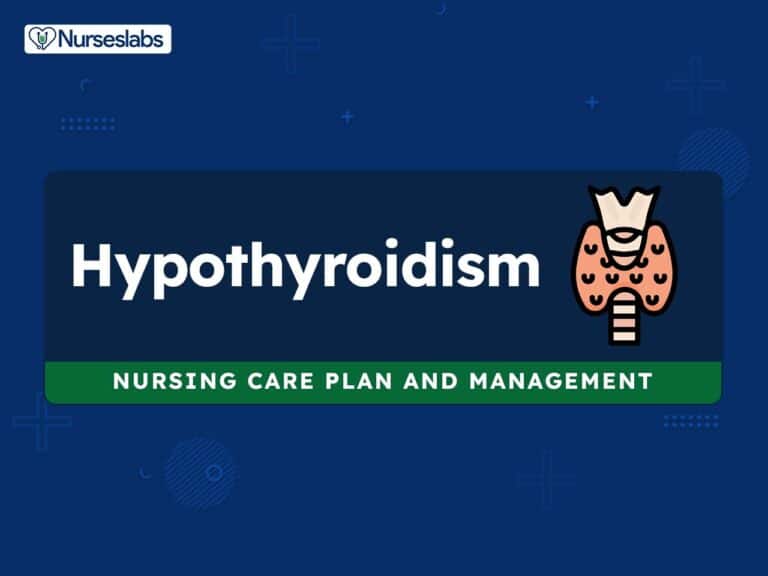
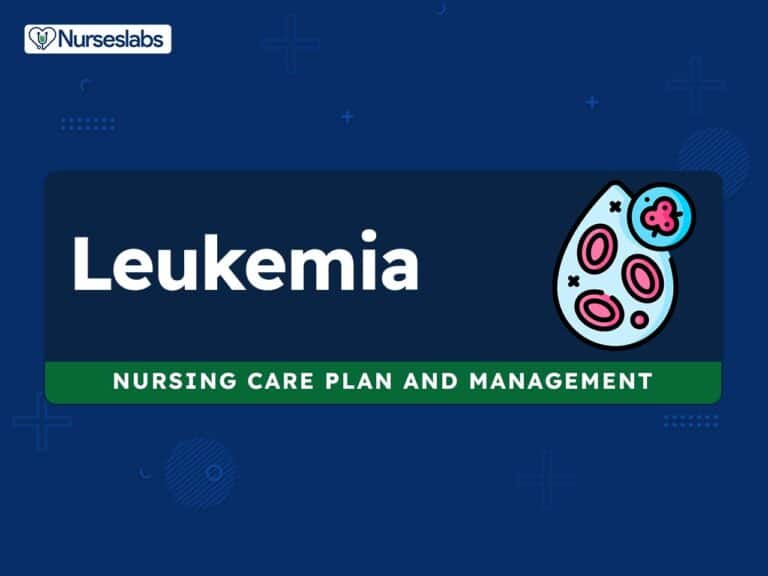
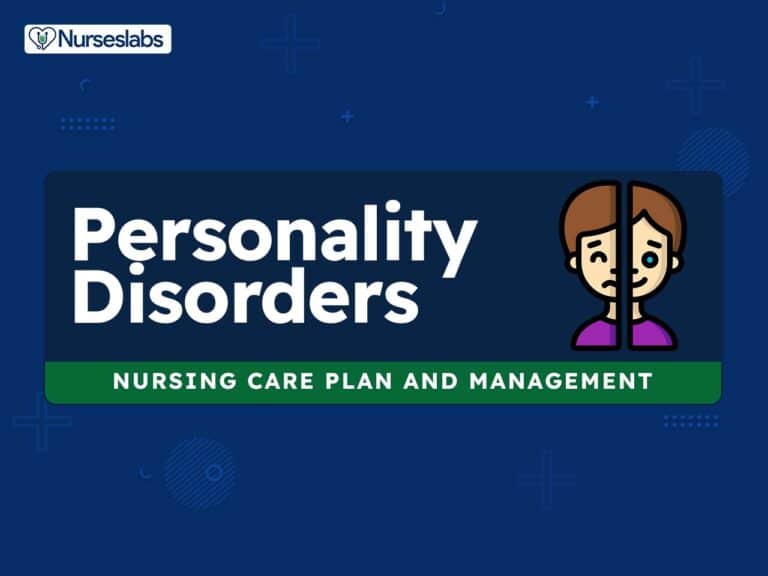
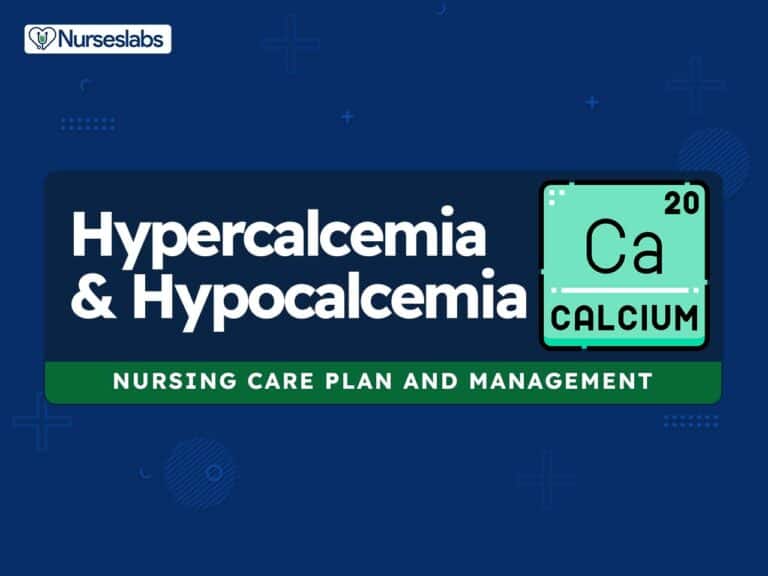
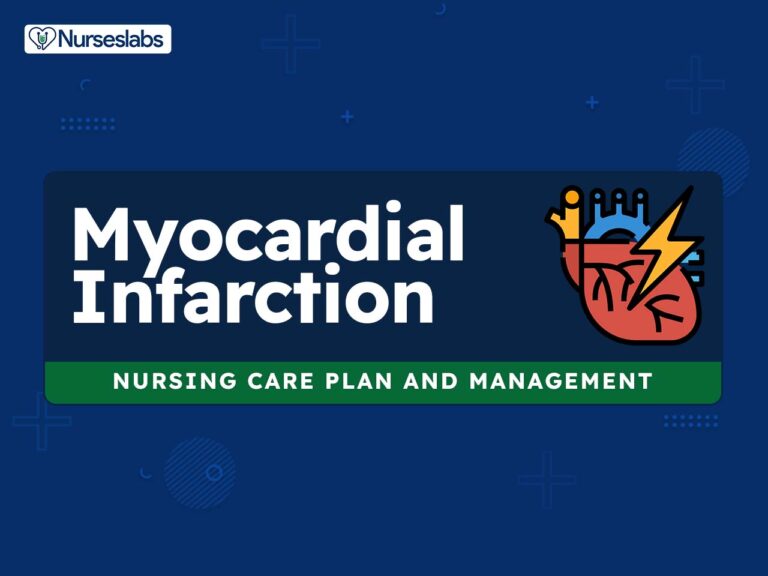

Leave a Comment